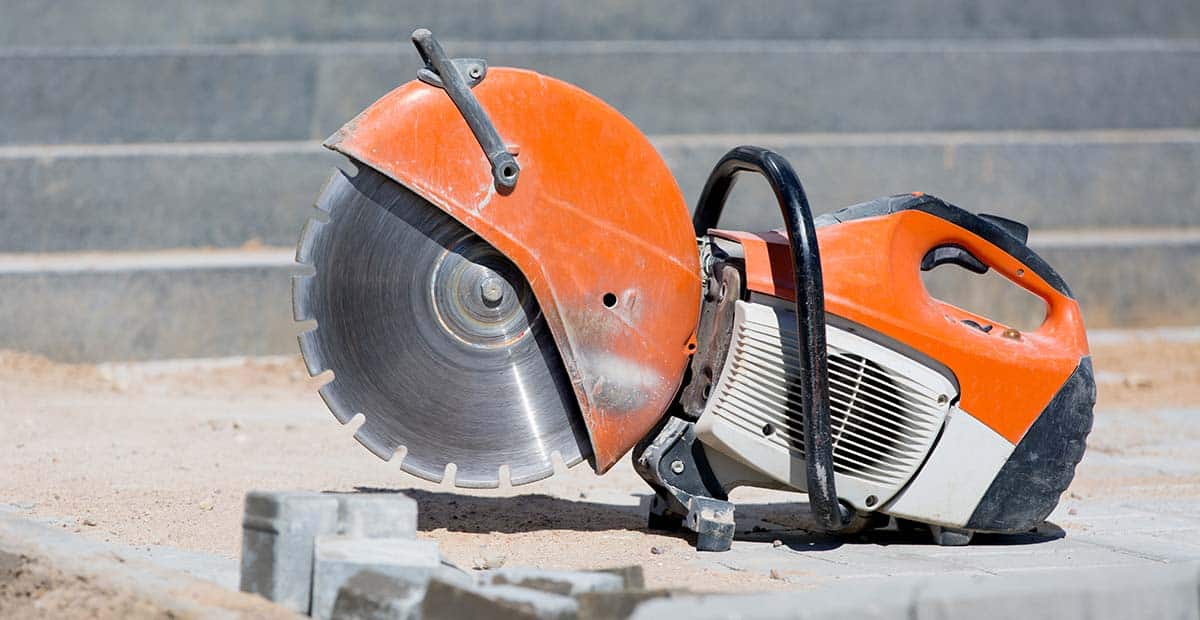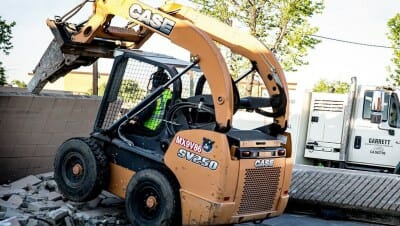Imagine you go back in time to the early 1900s. You need to cut out a piece of concrete, but there are no concrete cutting saws to use. So, you’re stuck with rudimentary tools that require lots of backbreaking work: the hammer and chisel. But, thankfully, concrete cutting technology has changed all of that.
Yes, things used to be hard, time-consuming and tedious. But, today’s expert concrete cutters can complete jobs quickly, precisely and beautifully.
So, how has technology improved concrete cutting?
When you think of today’s modern concrete saws compared to older models and of course the oldest methods for concrete sawing, today’s saws offer many advantages. Technology has improved concrete cutting in these 5 ways:
Efficiency
Using a sharp, top-of-the-line modern concrete saw majorly cuts downtime on the job. Rather than spending hours hacking away at a wall with a hammer and chisel, you can make a few cuts with a high-quality masonry saw. The sharp, spinning blade makes quick work of even the hardest concrete.
Portability
The first blade that could cut stone, brick, concrete and other masonry materials showed up in 1926. Known as a diamond blade, these first blades were not portable. Factory workers used them on specialty machines. But, because they were so big, workers couldn’t transport them to job sites. So, although diamond blades were an amazing technological breakthrough, the later portable concrete saws were even bigger game-changers.
Ten years later, the Clipper Electric Masonry Saw appeared on the market. This saw was a wet saw. It was stationary, but could still be used on job sites. Then, over the next forty years, different manufacturers worked on creating various versions of masonry saws. Eventually, more and more portable saws emerged until the first handheld saws appeared.
Dry Cutting Advancements
For many years, wet cutting was the only way to cut concrete. Why? Blades became very hot, so water kept them cool. In addition, wet cutting was favored because it helped control dust.
When some manufacturers finally developed dry cutting abilities, the blades wore out in as little as ten minutes of cutting! Finally, in the 1980s, laser welding technology developed in the aerospace industry. This breakthrough allowed manufacturers to add a diamond segment to a steel blade. With this new technology, handheld saws also emerged. People in the industry nicknamed a popular new saw the “Quickie Saw” because it made such quick, easy cuts. However, it’s weakness was precision. This is another element that has changed over time with technology.
One important technological advance was MK Diamond’s new dry cut masonry saw – the first made by a mason contractor. This was also the first saw exclusively for dry cutting. Before then, masons simply inserted a dry cut blade onto their wet-cut saw.
Precision
Since the imprecise days of hammer and chisel, precision in concrete cutting has changed a lot. Humans are often the cause of errors and inefficiency when it comes to concrete cutting. However, today’s concrete saws help remove human error. Today’s saws achieve crisp cuts that are precise and straight. In a similar way, drilling in concrete with modern drills means holes with precise diameters are possible. Specialty cuts are now possible too, thanks to special masonry saws with innovations that allow masons to make gorgeous beveled cuts.
Safety: Silica Standards
One constant hazard on concrete cutting sites is dust. Because most dust from concrete cutting contains silica, it’s a health hazard for workers. Exposure to the silica can have serious effects on the longterm health of mason workers, causing problems in the lungs.
Recently, the Occupational Safety and Health Administration declared new standards. Now, the Permissible Exposure Limit for silica dust is 50 micrograms. This means that masonry saw manufacturers are developing new solutions for dust management. Now, masons use vacuum systems with their saws to help eliminate the dust and keep worksites safe.
Many workers prefer using dry cutting with a vacuum attachment or system because clean up is easier. Although wet cutting helps eliminate dust, the water creates a messy slurry that dirties up job sites.
As you can see, concrete cutting has changed drastically since the time when the only tools masons had for this job were hammers and chisels. From blade advancements to vacuum systems, portable saws, and more, technology has transformed the industry for the better. Now, you can get your concrete cut quickly, precisely and with little mess.
Need an expert in concrete cutting? Contact Garrett Concrete today!






Leave A Comment